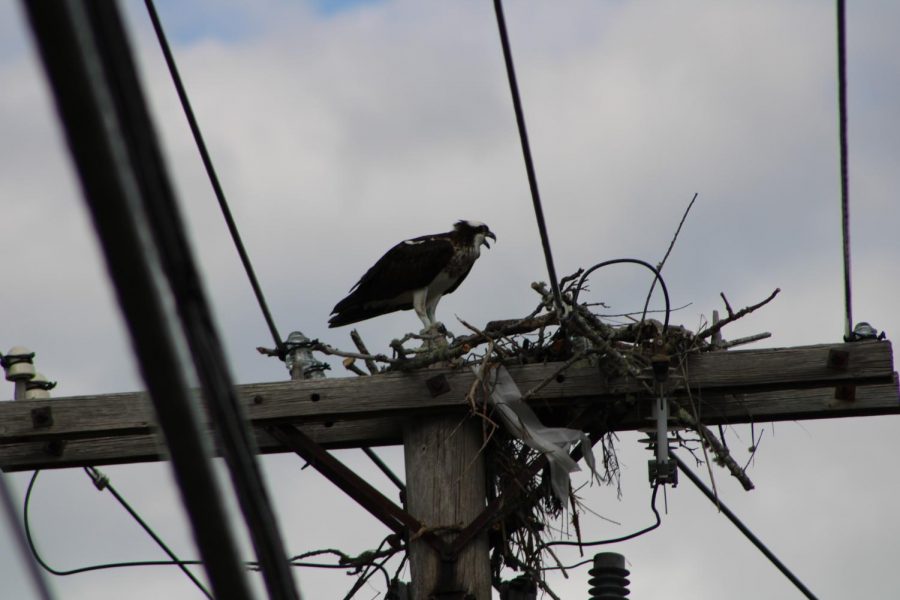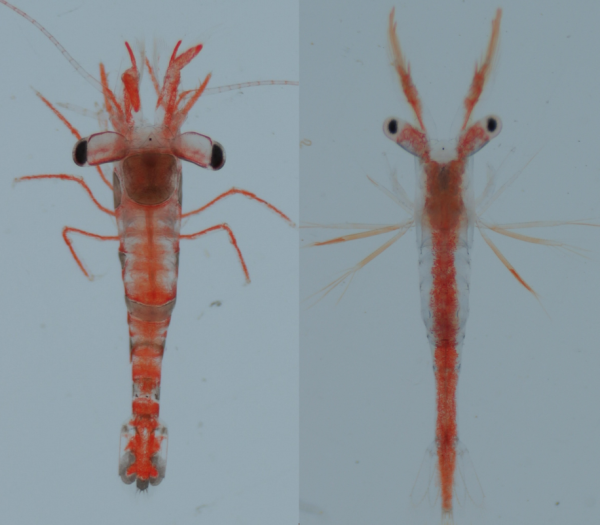Animal of the week: Osprey
Walking past the baseball and softball fields may be more noisy than usual with the chirps of baby birds. Look up and catch a glimpse of the large nest residing on a set of lights, occupied by an osprey couple and their children.
They can also be seen flying around campus searching for food and materials for their nest. When searching for food, they most often look for fish. They catch their prey by plunging forcefully into the water and grabbing them with their long talons. They bring the food back to the nest, keeping the fish faced upright with its head forward to decrease wind resistance.
Osprey couples usually mate for life and share responsibilities in taking care of their young. Females lay between one to three eggs in April or May and they incubate them for about a month. Both the male and female will protect their nests aggressively during incubation and the male will do the majority of the hunting.
The baby birds do not hatch at the same time; they are staggered so one child will be dominant over their siblings. 60 days after the babies have hatched, they will take their first flight. Around two months later, they will leave their parents. The babies will then begin breeding when they are two to three years old.
Ospreys will create their nests mostly out of sticks in high trees, telephone poles or nesting platforms close to the ocean, lakes or rivers. The Claire D. McIntosh Wildlife Refuge, located on Hope Street in Bristol, is part of the Rhode Island Audubon Society and has nesting platforms by the water for the osprey. These birds usually return to the same nest for breeding, which can grow to be 10 feet tall as more sticks are added each season.
These birds live on every continent except Antarctica and they migrate to the south in the winter. Their children remain in the warmer climates during their first spring and migrate back up north the next year.
Ospreys have a wingspan of between five to six feet and they weigh three to four pounds. They have white heads and brown crowns, and their backs are brown while their chests are white with speckled brown. Females are about 20% larger than males but they look similar, unlike many bird species. As juveniles, they resemble adults but have buff-tipped feathers and as they age, the juvenile osprey’s eye color will change from brown to yellow. Ospreys reach adulthood at 18 months.
Ospreys are commonly mistaken for hawks and eagles but they are their own species of birds of prey. They used to be a part of the hawk family and were referred to as the fish hawk but have been reclassified in their own genus and family.
Emily Dvareckas graduated from RWU in 2022 with a degree in forensic science. She spent three years with The Hawks’ Herald as the photo editor...






